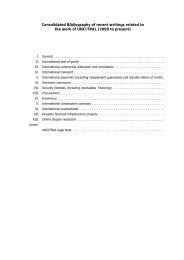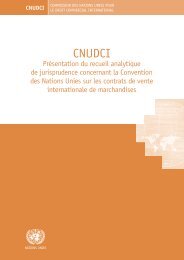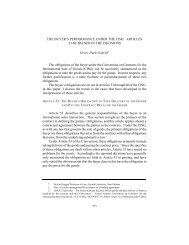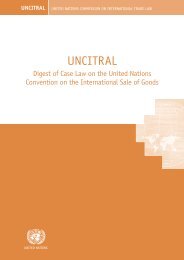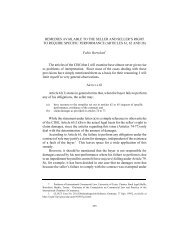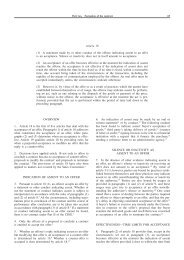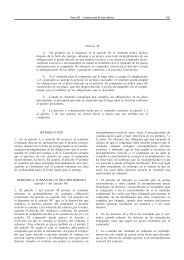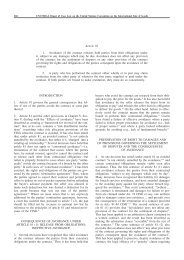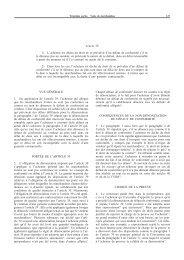Financial inclusion and poverty reduction: the role of ... - uncitral
Financial inclusion and poverty reduction: the role of ... - uncitral
Financial inclusion and poverty reduction: the role of ... - uncitral
You also want an ePaper? Increase the reach of your titles
YUMPU automatically turns print PDFs into web optimized ePapers that Google loves.
19. The propensity to save out <strong>of</strong> remittances has been consistently found to be nearly 40<br />
per cent across studies. In West Africa, in most savings‐based MFIs such as credit<br />
unions, village banks or savings <strong>and</strong> credit cooperatives, nearly six times as many people<br />
make deposits as take out loans at any one time. Despite <strong>the</strong> prevalent recognition that<br />
<strong>the</strong> poor have a high propensity to save <strong>and</strong> that <strong>the</strong>re is a considerable dem<strong>and</strong> for<br />
savings instruments as a result <strong>of</strong> increased remittances, even in Latin America fewer<br />
than 10 per cent <strong>of</strong> remittance recipients are estimated to have access to savings<br />
accounts, loans or o<strong>the</strong>r financial services. Access to commercial banks by low‐income<br />
<strong>and</strong> rural populations is limited in terms <strong>of</strong> physical distance to <strong>the</strong> closest branch <strong>of</strong> <strong>the</strong><br />
bank, thresholds in account fees or minimum required balances, <strong>and</strong> a lack <strong>of</strong> assets <strong>and</strong><br />
collateral opportunities for entrepreneurs.<br />
20. What do we have to do to leverage remittances to make financial services inclusive?<br />
That poor people are bankable <strong>and</strong> creditworthy is an important lesson learned after<br />
nearly three decades <strong>of</strong> micro‐credit activities. Despite <strong>the</strong> progress <strong>of</strong> micro‐credit<br />
initiatives, real involvement by <strong>the</strong> world’s largest financial institutions in this market or<br />
in leveraging <strong>the</strong>ir successes is anecdotal. There are currently examples <strong>of</strong> large private<br />
sector banks entering into risk‐sharing partnerships with non‐governmental or state‐run<br />
MFIs that merge social mobilization skills <strong>and</strong> a rural presence with <strong>the</strong> capital resources<br />
<strong>and</strong> financial credibility <strong>of</strong> a bank.<br />
21. Remittances provide a seamless opportunity to leverage such partnerships. The larger<br />
banks diversify <strong>the</strong>ir market opportunity by venturing into micro‐finance at lower<br />
transaction costs by partnering with MFIs that know <strong>the</strong>ir customers very well.<br />
Simultaneously, <strong>the</strong> existence <strong>of</strong> larger numbers <strong>of</strong> recipient households provides<br />
pr<strong>of</strong>itable prospects for MFIs, which can diversify <strong>the</strong>ir product platform by leveraging<br />
<strong>the</strong> expertise <strong>of</strong> larger institutions into tailored products to meet <strong>the</strong> needs <strong>of</strong> <strong>the</strong>ir<br />
clients.<br />
6



